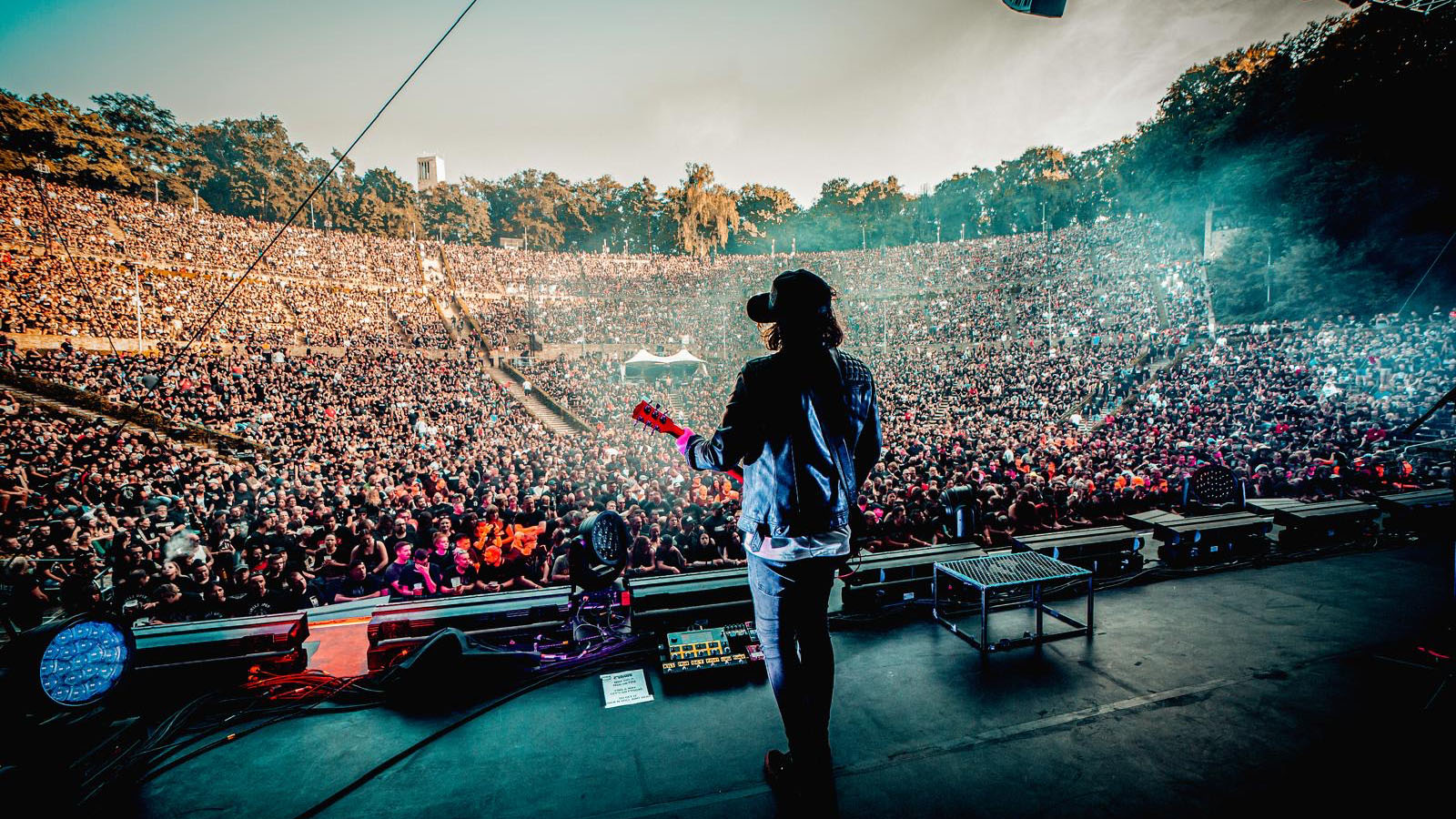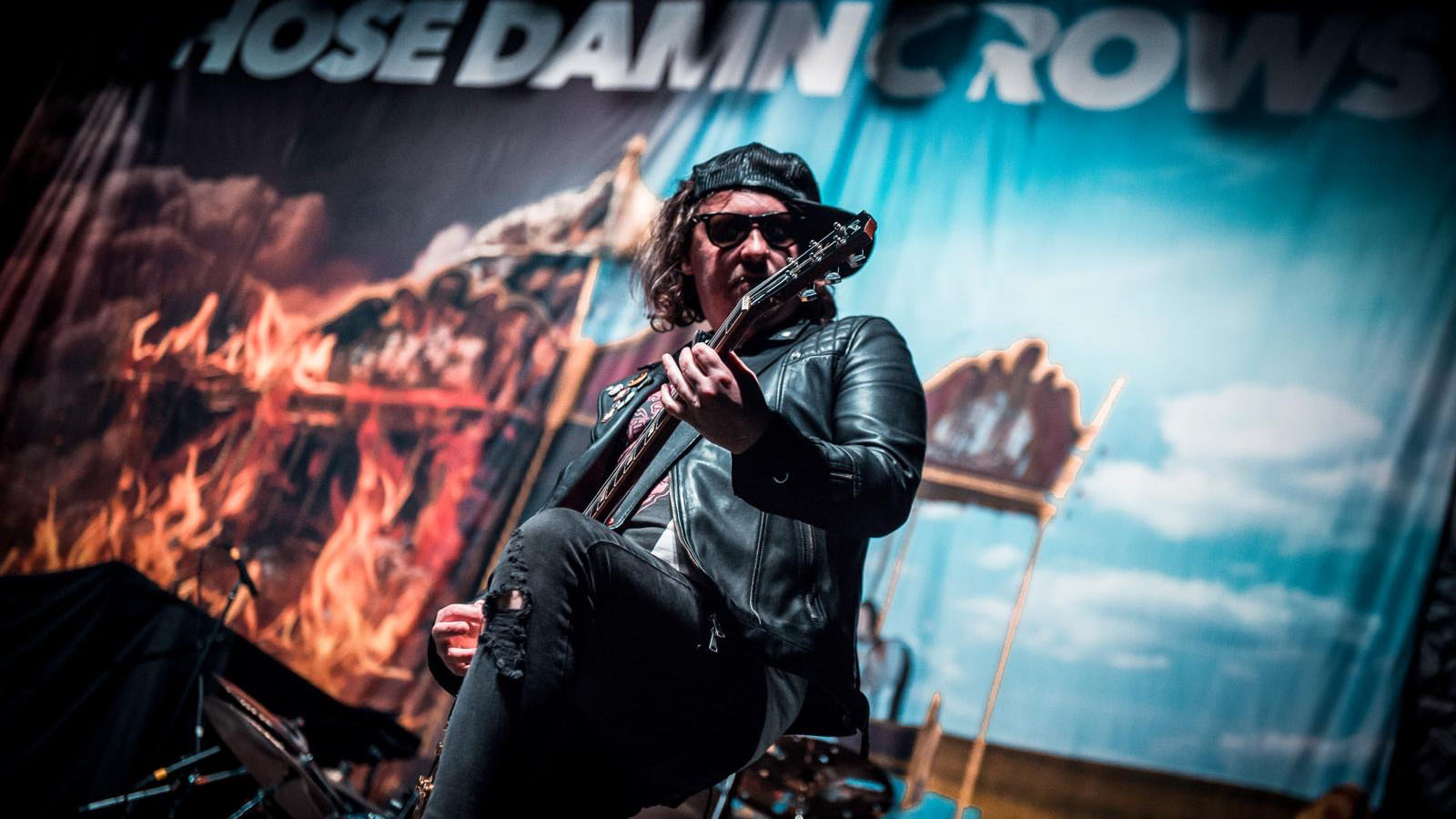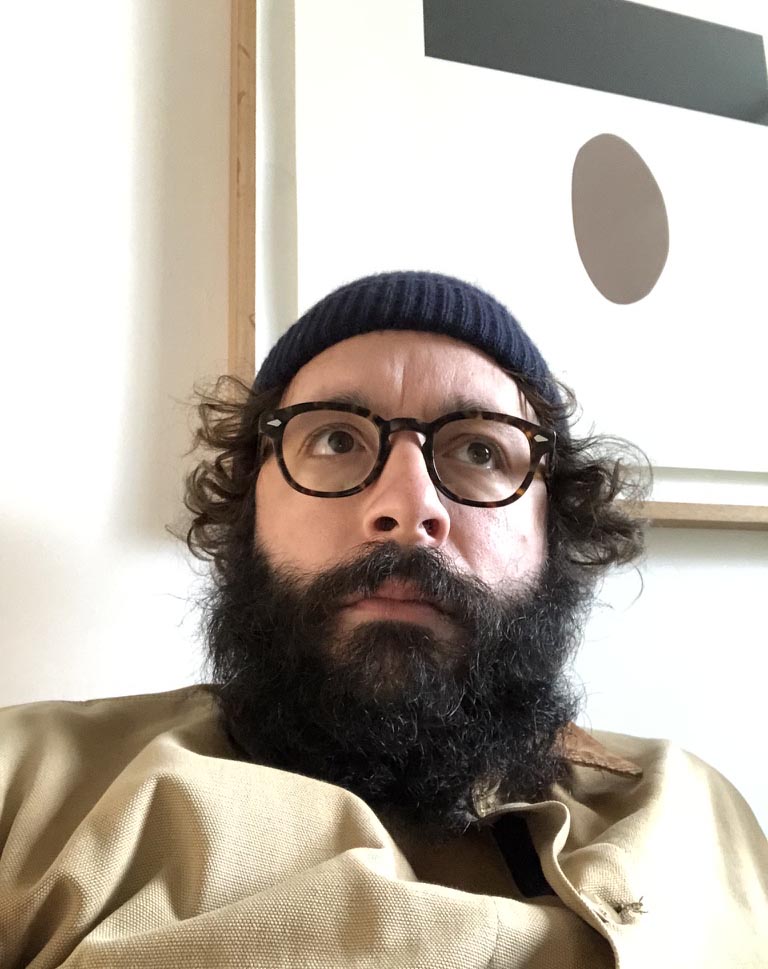“The last thing you want to do is play a widdly-widdly riff that’s getting in the way of the vocal”: Those Damn Crows’ Ian ‘Shiner’ Thomas on how to write a No.1 album, what he learned from Nirvana, and the Slipknot riff he wished he wrote
With the Welsh rockers' latest album, God Shaped Hole, topping the charts, we check in with riff-master Shiner to talk song structure, grunge inspirations, and knowing when not to play

There is a mechanical efficiency to modern pop songwriting. It is art as engineering, a process that can – and has – been codified in a formula. Just think of the ABABCBB structure. Like the screenplay for a blockbuster, the pop song is gamed out from the beginning. Sure it’s a little bloodless but is effective. That’s pop. The question is: Can you do the same for rock?
Ian “Shiner” Thomas might be able to tell us. He is the guitarist with Those Damn Crows, and the Welsh rockers have just scored a number one album with God Shaped Hole. Whatever they are doing, it’s working.
Theirs is not a wall-of-sound approach. On a track such as No Surrender, you’ll find that there are some wide-open spaces where the electric guitar backs off completely. That’s not by accident. Those dynamics give the arrangement a sense of scale, the illusion of sounding bigger, and it is a songwriting lesson that the learned from from the early ‘90s, when Kurt Cobain changed everything.
“I suppose the space is the light and the dark thing,” says Shiner. “We all love Nirvana. Nirvana would always start, like a shock, and then the verses would always come back, and then building it back to the chorus.
“So maybe subconsciously, somewhere, we are very aware of the light and dark thing. Because we definitely do it in a middle eight sometimes, if the song is a constant romper then it’s, ‘Let’s make the middle eight softer.’
“I think that is definitely a conscious thing, ‘How do we make this different to this part?’ But I think, fundamentally, the song will tell you what to do.”
Cobain is not the only songwriter from grunge’s vanguard to have an influence on Those Damn Crows. What Eddie Vedder and the late Chris Cornell did on the mic informs the way frontman Shane Greenhall chooses his melodies, and his melodic sensibility.
Want all the hottest music and gear news, reviews, deals, features and more, direct to your inbox? Sign up here.
And in turn, how Greenhall chooses to phrases his vocals ultimately shapes the arrangements. The guitar has to stay out of the way and sit in the background.
“Shane loves Soundgarden, and Pearl Jam,” says Shiner. “So when I hear Shane singing The Night Train I can definitely hear that in the notes he is choosing over the underlying chords – ‘That’s particularly clever of you, Mr Greenhall!’
Shane loves Soundgarden, and Pearl Jam, so when I hear Shane singing The Night Train I can definitely hear that in the notes he is choosing over the underlying chords
“It is exactly like you said, if Shane is singing away then the last thing you want to do is play a widdly-widdly riff that’s basically getting in the way of the vocal melody.
“It’s always a push and pull thing. And it could be Shane singing, it could be Lloyd [Wood] playing bass, it could be Ron [Huxford] doing a drum fill. Okay, they are doing that there – do not interfere with what they’re doing. That’s their moment. Let them have it. And that’s how my brain processes songs.”
Perhaps it is because Shiner often plays a Gibson BB King Lucille that makes us think of what the King of the Blues said about the importance of recognising that spaces between your notes are part of the music, too. But it is true. Sometimes not playing is the best strategy.
Shiner agrees. Make the audience wait for the riff. A little tension and release does no harm. Also, a little variation goes a long way.
The deep cuts on any record are really important to me, the little earworms you didn’t necessarily know were there the first time around. That’s where the fun is
“I am assuming that the average listener is craving a little change, something different to keep the ear interested,” says Shiner. “I think being a musician you are far more aware of it. You are listening to it in the same way Joe Bloggs is listening to it, so if I am getting bored, then they’ll be getting bored, so let’s augment it a little bit, just to spice the ears up a little bit.
“How many times have we all listened to music and we’ve listened to it five or six times and you go, ‘Oh, I didn’t realise that little bit was there.’ You start to listen deeper, and it is almost like the deep cuts on any record are really important to me, the little earworms you didn’t necessarily know were there the first time around. That’s where the fun is for me.”

Like many guitar players, Shiner cut his teeth on playing 12-bar blues. He speaks about songwriting – and is relationship to music – as thinking in loops.
I also love Simon Neil from Biffy Clyro. I think they’re very clever in a rhythmic sense and the voicing of the chords
The 12-bar structure can be infinitely helpful for developing that feel for repetition, and developing a vocabulary of turnarounds that take you back to where you started, all of which are skills Shiner uses on a day-to-day basis with Those Damn Crows.
The evidence is right there – they even have some I-IV-V progressions in the catalogue. And what is a 12-bar blues with a I-IV-V progression if not training wheels for guitar-based songwriting?

“I can only speak for myself here but I definitely got brought up learning a lot of 12-bar blues, so I’ve always structured for 12 bars, and then my loop will start,” says Shiner. “But then, I don’t necessarily like fiddly guitar players. If someone says to me, ‘What’s your favourite guitar players of all time?’ I’d go James Hetfield, Jim Root.
“Jim Root is probably the more technical one. And then I’ve got John Frusciante, and I also love Simon Neil from Biffy Clyro. I think they’re very clever in a rhythmic sense and the voicing of the chords, and that’s to me is far more interesting than watching someone [mimes widdling]. That’s not my bag. The flashy guitar player. Hats off, anyone who can do it, well done. I can’t.”
In other words, rhythm is king.
“As soon as you said that I thought of the Clash,” he says. “I don’t know why I was thinking of the Clash but you’re right. You’re right, it’s all about der-na-na-na, the pulse of the song.”
Nobody does this better than Slipknot, argues Shiner. At least, Psychosocial, from 2008’s All Hope Is Gone, is the one riff he wished he had written. “Actually, the whole thing,” he corrects himself. “My favourite riff in that song is not necessarily the intro. It’s the part where the band kick in. There’s the riff! It’s the bounce.”
That’s how you know the song is working. But what about the album? Just how do you write a number one rock album?
“We’ve always been the same since day one. We bring out three singles, the rest of the album to us, whether it’s 10 songs, 12 songs, 14 songs, they all have to be singles in their own right," he says. “nd that’s just the way we have always been when we were little, and, again, it’s probably the Nevermind thing because there’s not really a bad song on Nevermind.”
- God Shape Hole is out now via Earache.
Jonathan Horsley has been writing about guitars and guitar culture since 2005, playing them since 1990, and regularly contributes to MusicRadar, Total Guitar and Guitar World. He uses Jazz III nylon picks, 10s during the week, 9s at the weekend, and shamefully still struggles with rhythm figure one of Van Halen’s Panama.
You must confirm your public display name before commenting
Please logout and then login again, you will then be prompted to enter your display name.





